featuring:
Ben Ford
- from:
-
Ford's Filling Station
- recipe:
- Pork belly lettuce wraps w/ pickled watermelon + chili glaze
DAY 1: Watch out hoggies, we’re comin’ to shoot you! Just kiddin’. Kinda. We’re off to ReRide Ranch, 70 miles north of Ben’s place to see some hogs.
We arrive and meet the owner, Lefty, a man in a straw hat and a bushy horseshoe moustache that smiles ear to ear. Tucked away in the mountains, this farm is beautiful but dang, it’s butt cold! Please don’t rain. We scout + make some curly-tailed friends with the BIG hogs and a hoglet too. Oh great… just stepped in hog sh… guess I’m riding in the back. You’d think it smells here but really it doesn’t.
We come to a corral and a cow greets us with this loud squawk and Peter says he sounds like Chewbacca. We all shake our heads. Peter says, “What? OOOH.” Ben smiles. After shooting some great pics we head back into town…
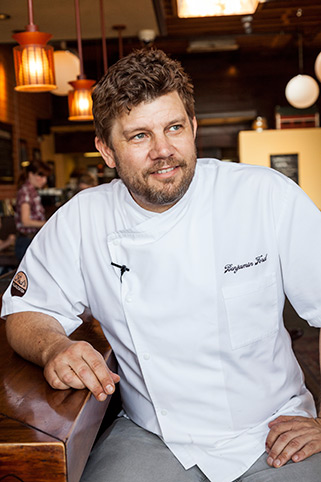
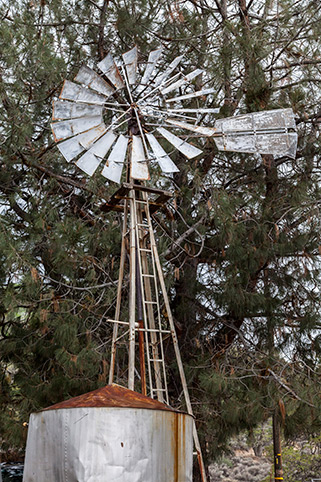
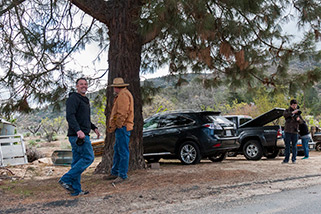
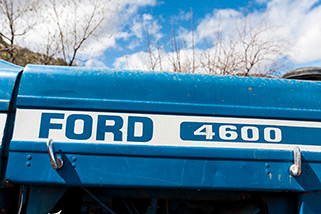
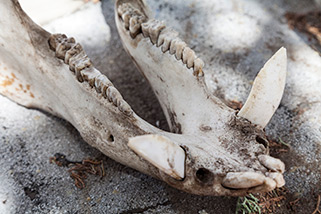
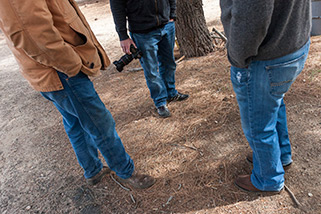
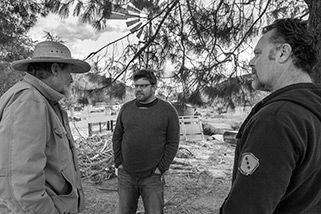

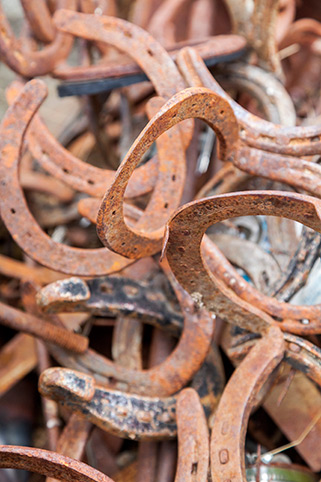
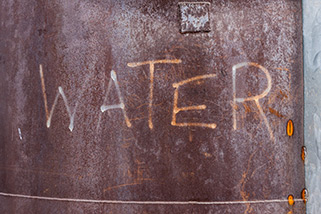

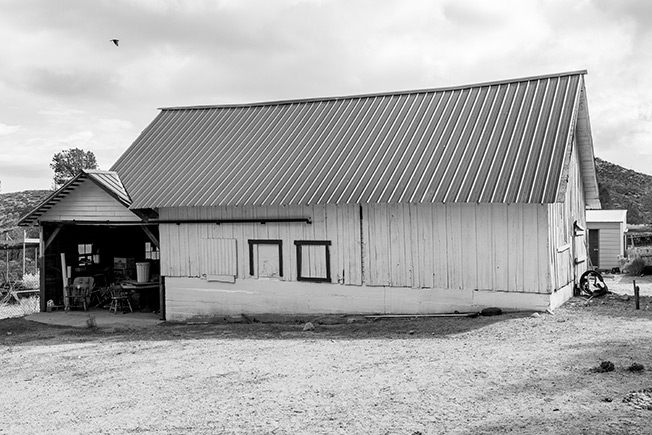
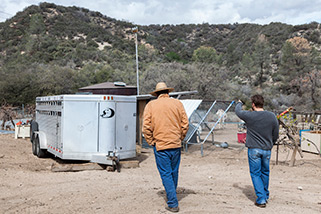
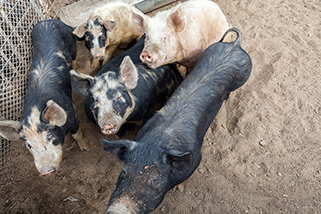

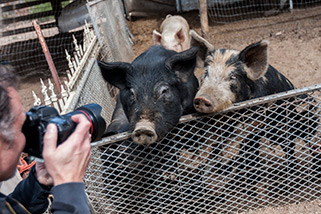
Describe yourself in one word.
Crafty.


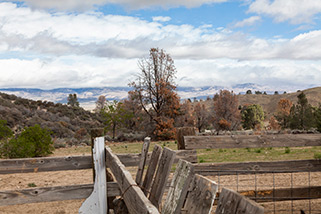

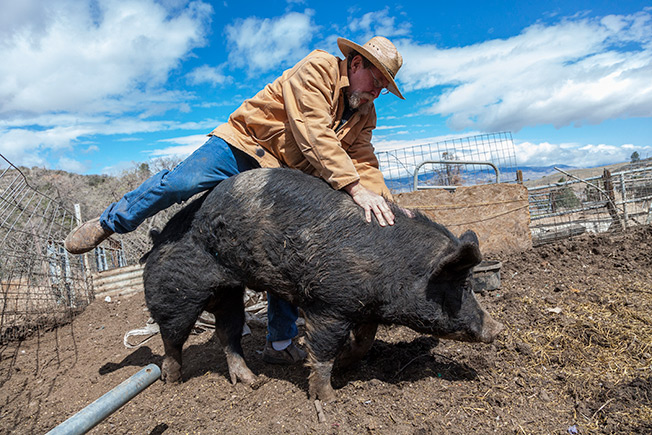
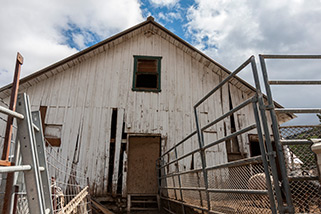
Why do you put on these enormous, handcrafted feasts?
I love feeding people and I love feeding people all at one time. I love giving up the inhibitions behind food. When someone comes up to my table after a wonderful meal and they have that magical moment when money and stress isn’t a factor anymore, it’s just about what’s happening at that table. Feasts are a great way to have that effect on a large group of people. The inhibitions go away when you have a turkey leg or you’re ripping apart crabs and boozing it up, having fun. All those inhibitions go out the door and that’s my favorite way of enjoying my time with other people. When you put a bunch of food at a table with a lot of people… good things happen.

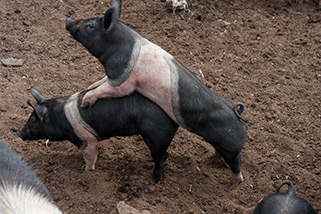
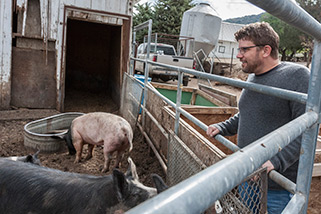
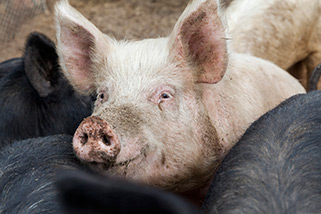
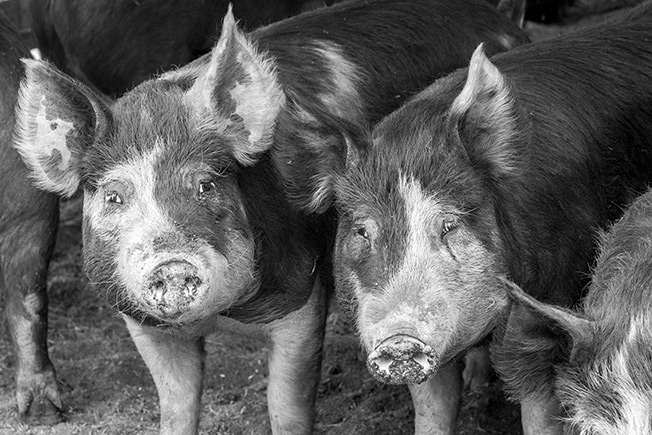
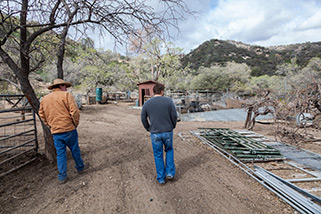
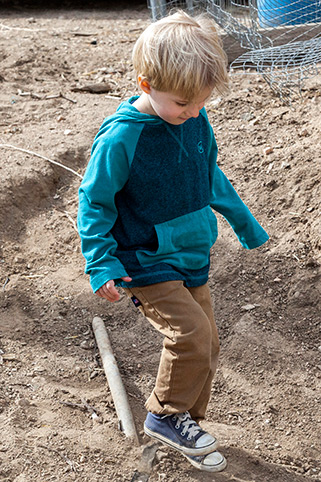
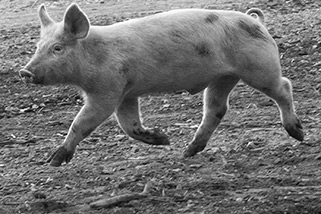
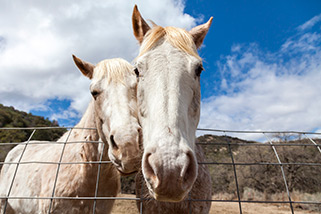
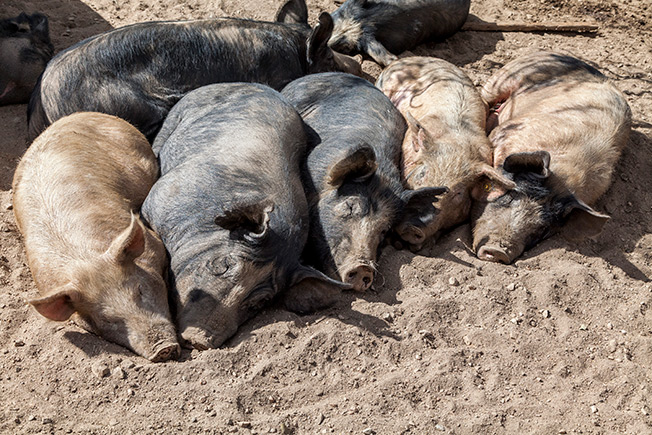
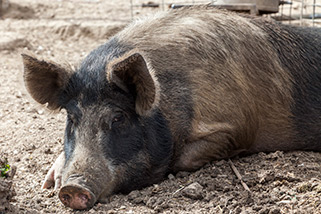
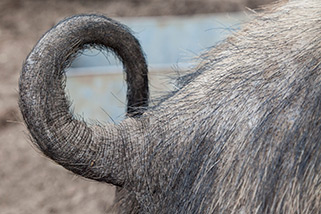
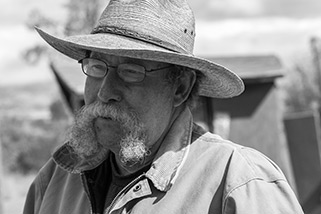
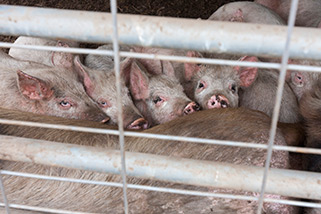
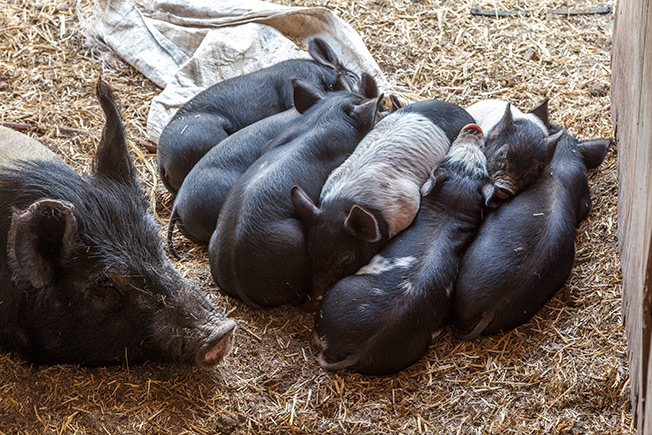
Lefty seems like a man of many talents, why’d you choose him and ReRide Ranch?
I had a short list of people I wanted to grow from and he was probably one of ten different farmers I called. I do have relationships with some of those other farmers to this day, like one woman who grows kune kunes out near Ontario, but Lefty and I decided to work together and form this synonymous relationship that just works really well. Anytime you’re going into a tough business and building foundation and trust, you have to really like the people you’re working with. And to me, he was the consummate pig farmer. Yes, he’s a man of many talents… a blacksmith, an artist, a cowboy poet, musician, but he’s also a damn good pig farmer.
And that’s his real name?
Lefty Ayers, yeah.
That’s like a baseball player name.
It’s a cowboy name.
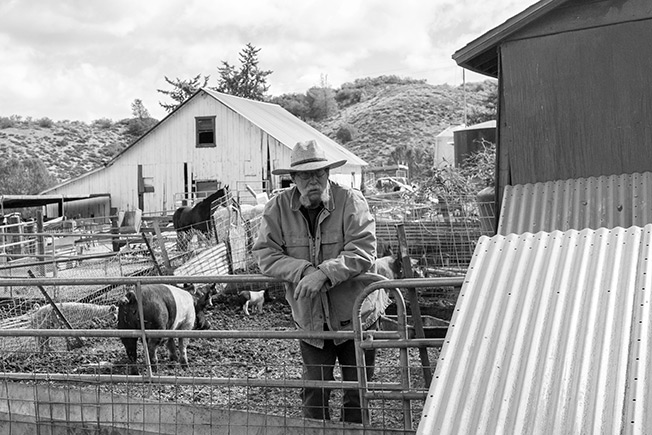
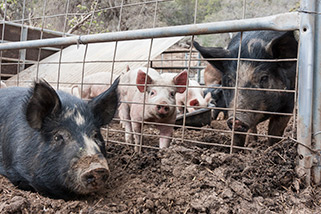

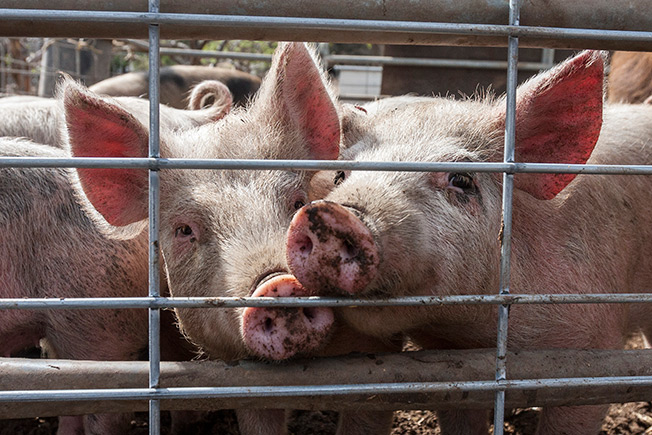
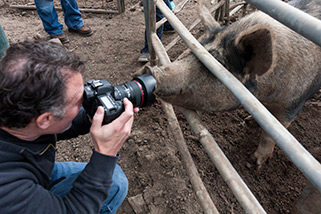
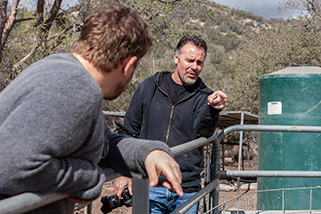
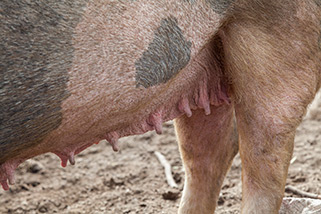
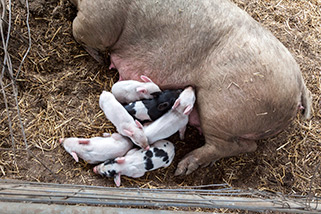
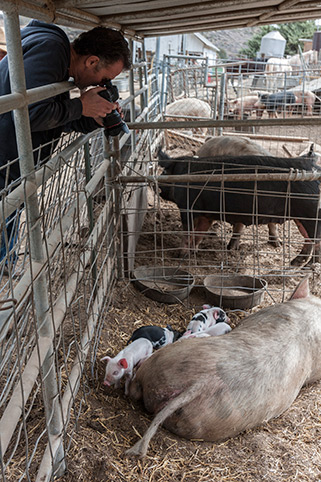
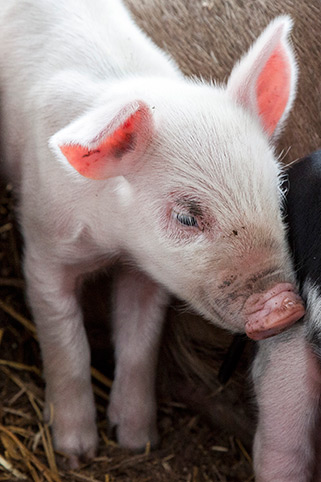
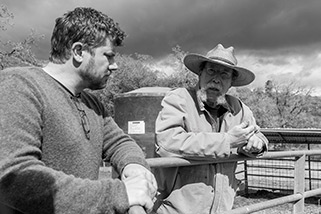
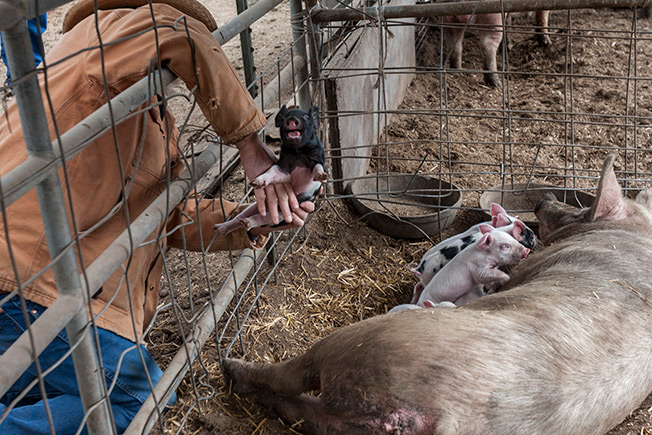
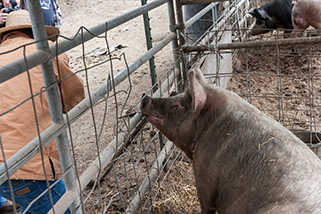
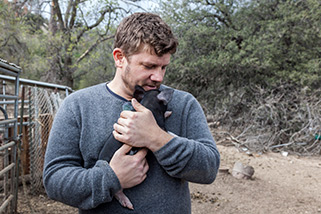
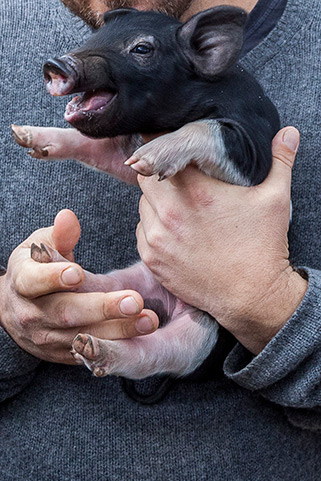
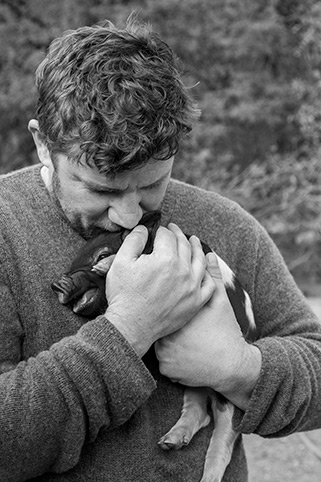
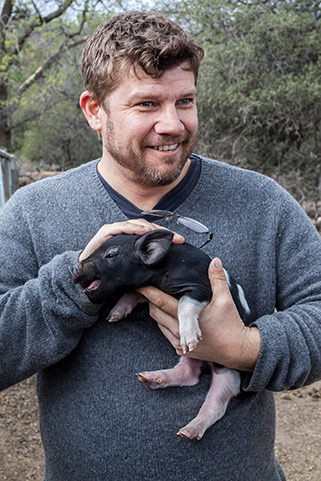
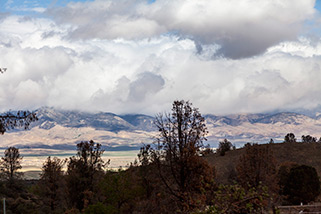
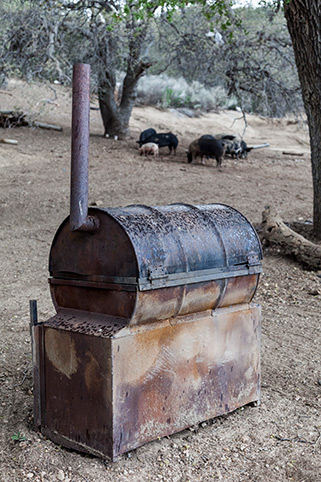
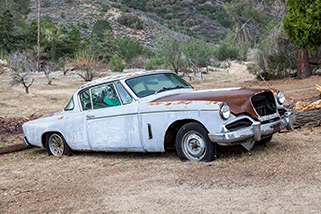
Why feed the hogs acorns?
I don’t know the chemistry involved, but they’re finished on these things for the flavor. It adds a sweetness to the meat that pigs finished differently just wouldn’t have.
Lefty was talking about someone who wanted almonds, too.
Yeah, almonds, same thing. It’s important, but the marbleization and the quality of the pork really has more to do with the breed and even more so the family line. Now we’re 4 or 5 generations deep into our pig farming. We know that we have good mothers and good fathers that have good children, as opposed to having stressed pigs. It’s based on family, on genetics. Our pork’s getting better and better every year.
It was interesting hearing you and Lefty talk about all that, about the family tree.
Yeah, but believe me those weren’t the conversations we having when we first started raising pigs out there. We were just wondering what are we going to feed these guys? Do we use any probiotics or treatments? Are we going to treat the water? It took a lot of work to get to this point.

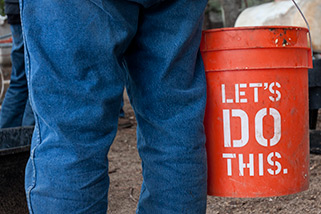
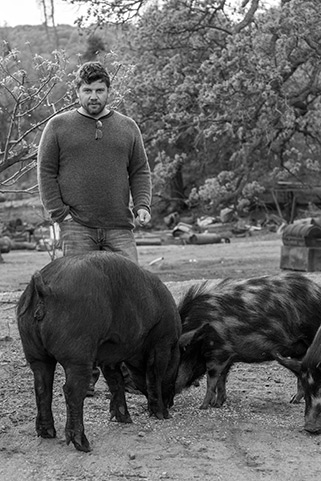
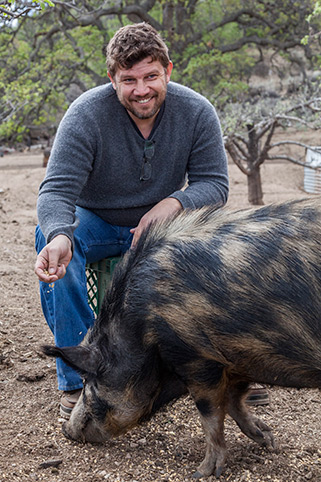

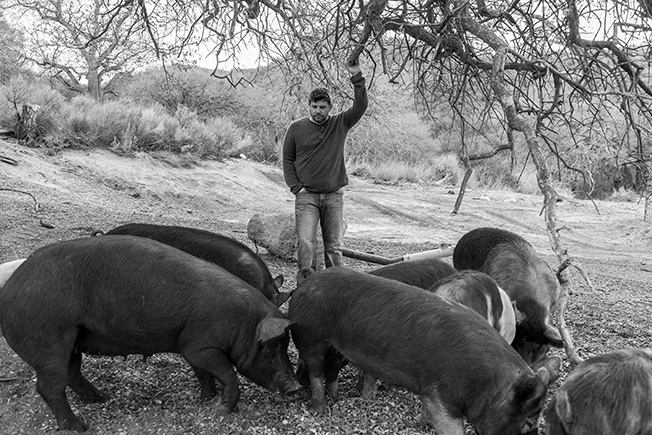
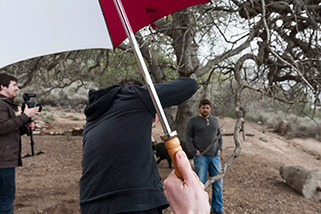
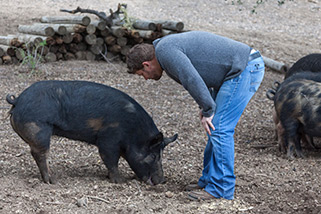
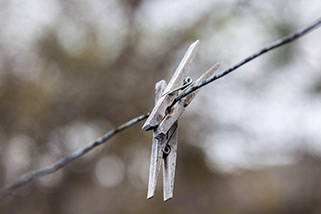
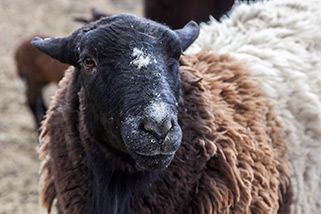
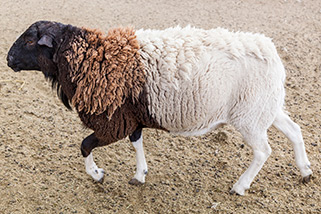
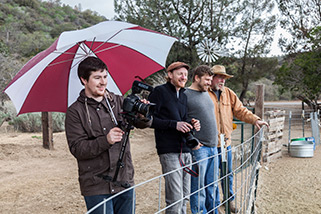
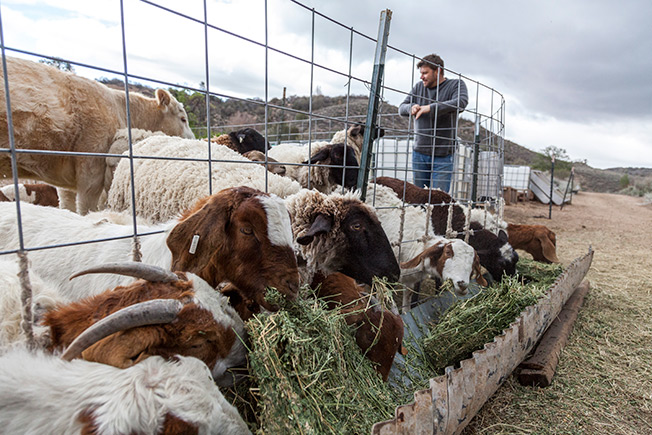
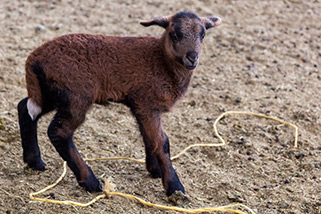
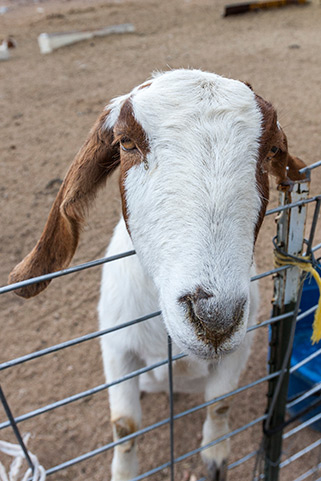
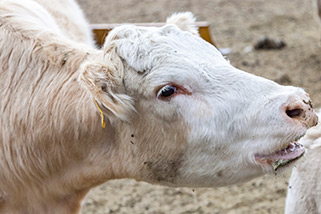
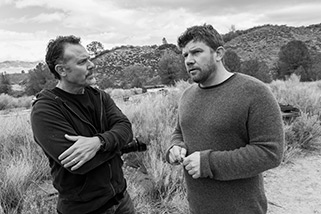
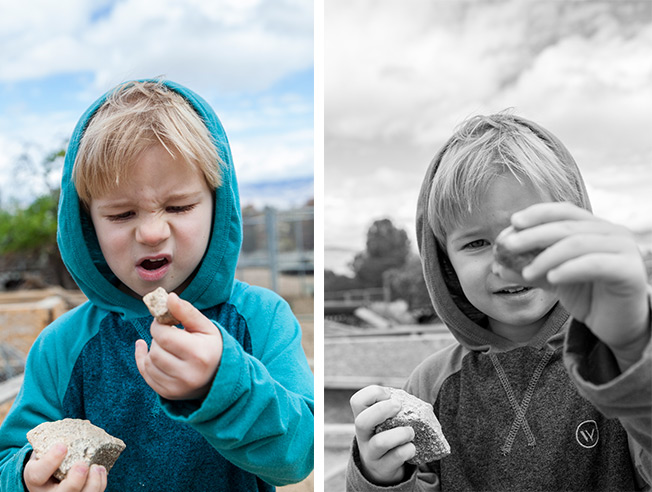
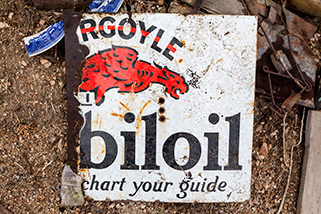
Why are you fascinated with non-traditional cooking vessels like the one we found at the ranch?
You say it’s non-traditional but I think it is. I really am a traditionalist cook, I’m not a modernist. A modernist to me is a molecular gastronomy type, but I’m working with steel and wood, you know? Some real stuff. An animal, steel, wood, and whatever contraption I can find or build to cook it. It’s as old as man has been cooking with fire.
We’ve only been driven to indoor kitchens in the last hundred years or so. Before that there’s thousands of years of cooking history that took place outdoors. We don’t have a lot of written documentation for it, but I look at a lot of my techniques as old world techniques. I’m sure they weren’t using cold rolled steel and stuff like that, but it all goes back to what happens when you bury a pig in the ground. How do you use heat and moisture and your environment to cook whatever particular animal you need to?
That’s why, theoretically, my things work. For the cookbook (Taming the Feast) I didn’t really know if they would, I was building a lot of these contraptions for the first time. Should I build this fire 24 inches off the animal or 18 inches? But I found other sources for research, knowing it might take half an hour more or less—and we actually nailed the timing on most of them—but it took a lot of research in order to figure out how these materials are affected.
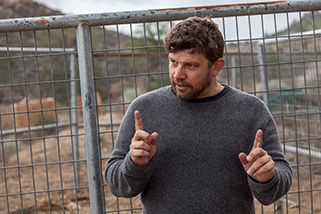
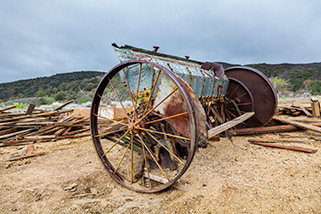

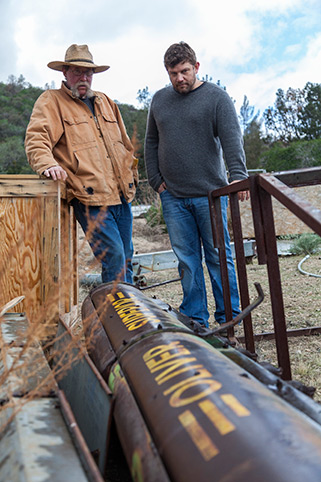

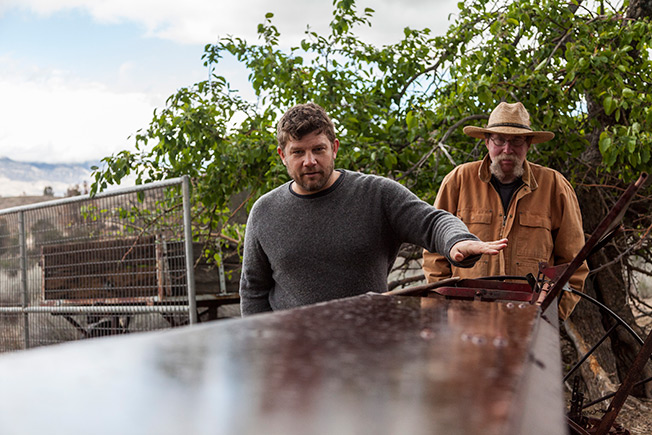
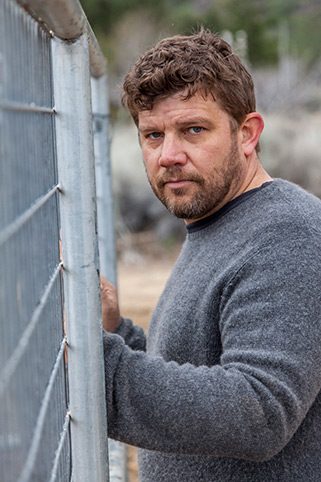
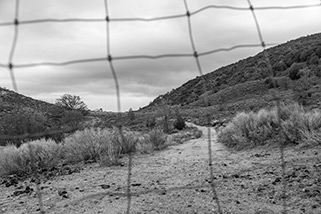


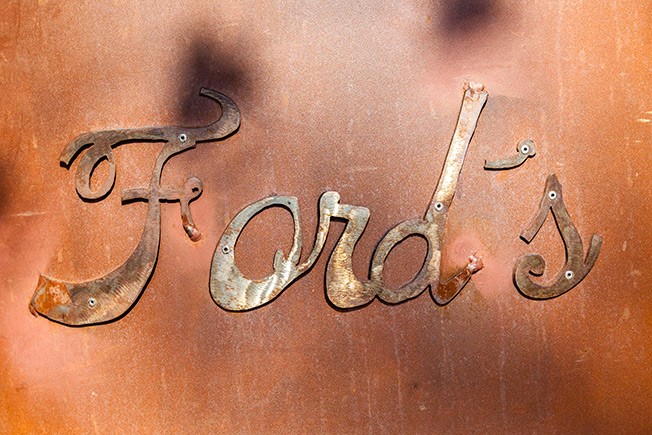
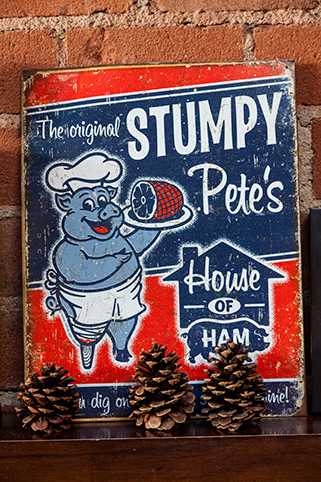



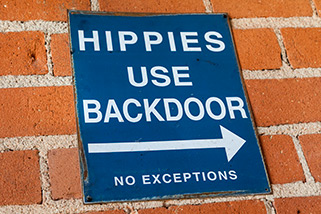
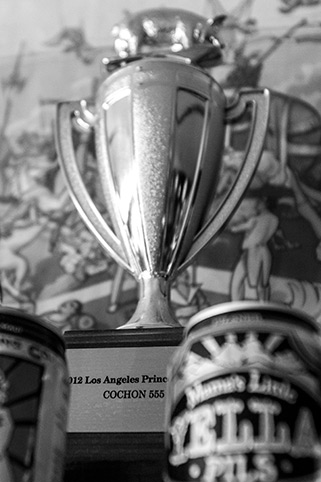

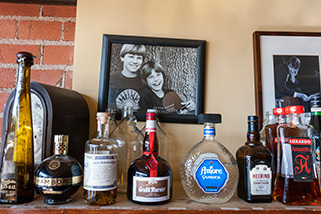

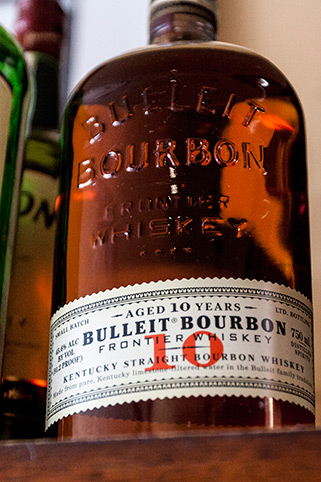
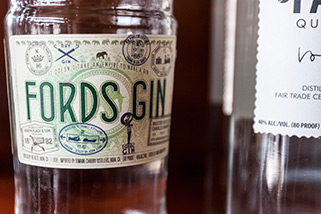
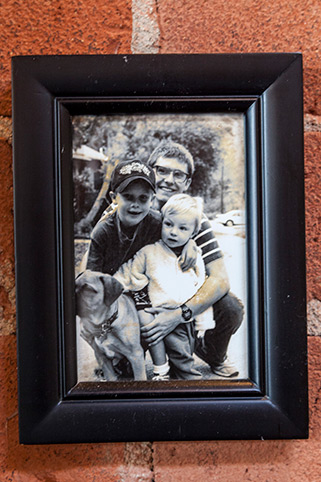
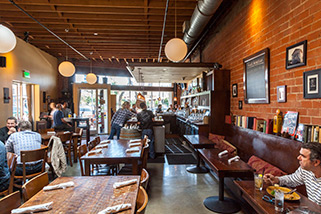
Who would you most like to cook for and why?
I don’t really have a bucket list, you know? I have cooked for some incredible people but I’ve never really kept a list. I think my favorite person to cook for was Larry Bud Melman. For some unknown reason he’s the one that comes up first in my head. I really enjoy cooking for musicians, in general. I wouldn’t say anyone in particular but musicians and chefs seem to have a kinship as far as the process we go through to develop what we do. Any foodie musician you put in front of me I’ll trade tricks with them.
But you don’t even have music in your kitchen! [Laughing]
We don’t in our kitchen because it distracts the cooks, but music is a very important part of my concept. We’re constantly hosting live bands and working on our set list here, trying to create that atmosphere. The music here is predominantly what I call “bohemian rhapsody blues.” It’s the music I grew up hearing in Southern California. It has a big “Bakersfield sound” influence with all the blues and stuff that was already here and it’s a great mix.
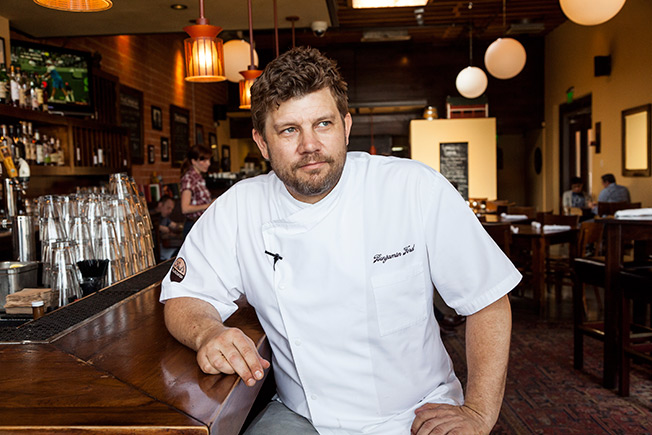

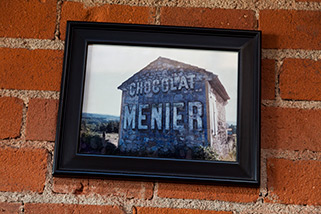
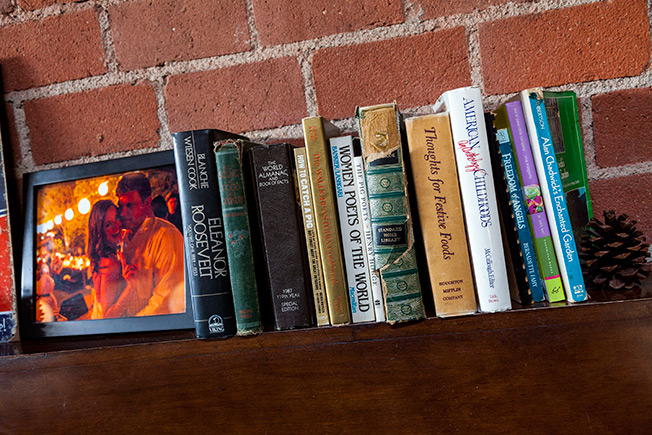
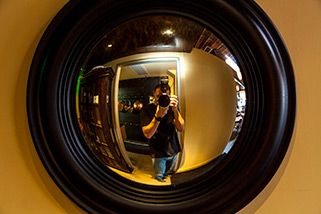
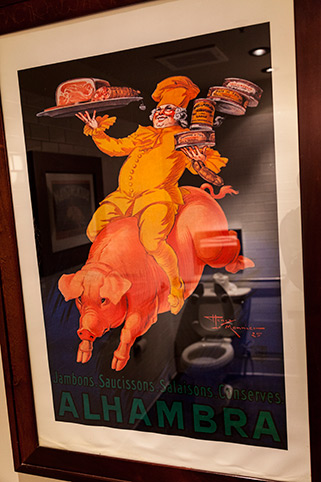
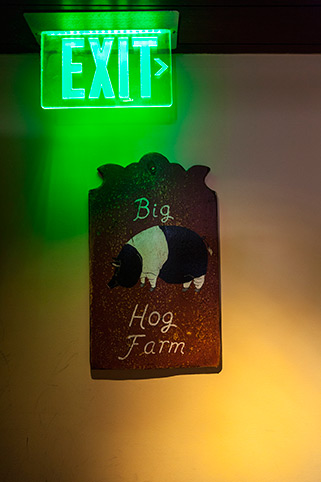
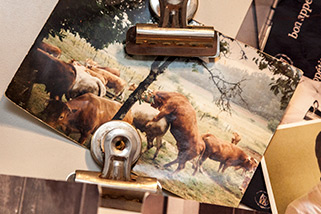
the recipe:
Pork belly lettuce wraps w/ pickled watermelon + chili glaze
- 2 lbs. pork belly
- Marinade
- ¼ c. tbsp. sugar
- 1 c. water
- ½ c. soy sauce
- ¼ c. sake
- 4 garlic cloves, chopped
- 1 tbsp. ginger, grated
- 3 tbsp. rice vinegar
- 1 tsp. sesame oil
- Pickled Watermelon
- ¼ medium watermelon, the rind including ½ inch red flesh
- ½ c. rice wine vinegar
- ¼ c. water
- ½ c. sugar
- 2 ½ tsp. kosher salt
- 1 whole star anise
- 1” knob of fresh ginger, peeled
- Garnishes
- 1 wedge pickled watermelon, sliced thin
- 1 Persian cucumbers, sliced thin
- ½ serrano, sliced thin
- 1 bunch cilantro, leaves picked
- 1 bunch fresh mint, leaves picked
- Lime wedges
- Make pickled watermelon.
- Peel the watermelon leaving the green inner rind intact. Cut the watermelon rind into 1-inch-thick slices.
- Combine the vinegar, water, sugar, salt, star anise, and ginger in a saucepan and bring to a boil, stirring to dissolve the sugar. Add the watermelon rind and boil for 1 minute, then carefully transfer to a container. Cool and then refrigerate.
- Combine all ingredients for marinade and marinate pork belly for 2 hours.
- Preheat smoker to 230 ℉.
- Smoke belly for 2 hours. (Note: If you don’t have a smoker, go straight to the next step and braise in oven for 4 hours instead of 3)
- Preheat oven to 275 ℉.
- Remove from smoker and place in a roasting pan, fat side up. Add the marinade and add mixture to the bottom of the pan. Liquid should reach ¾ of the way up the pork belly or what I like to call “gatoring”. Cover pan with aluminum foil. Braise in oven for 3 hours.
- Remove pork belly from pan and slice 1/2” thick and 3” long. In a hot pan or grill, sear the pork belly on both sides.
- Combine in large bowl, combine garnishes and toss to mix. Set aside until ready to serve.
To serve: Place one piece of pork belly on each lettuce cup. Spoon chili glaze over each piece, and top with garnishes. Serve with a wedge of lime.
